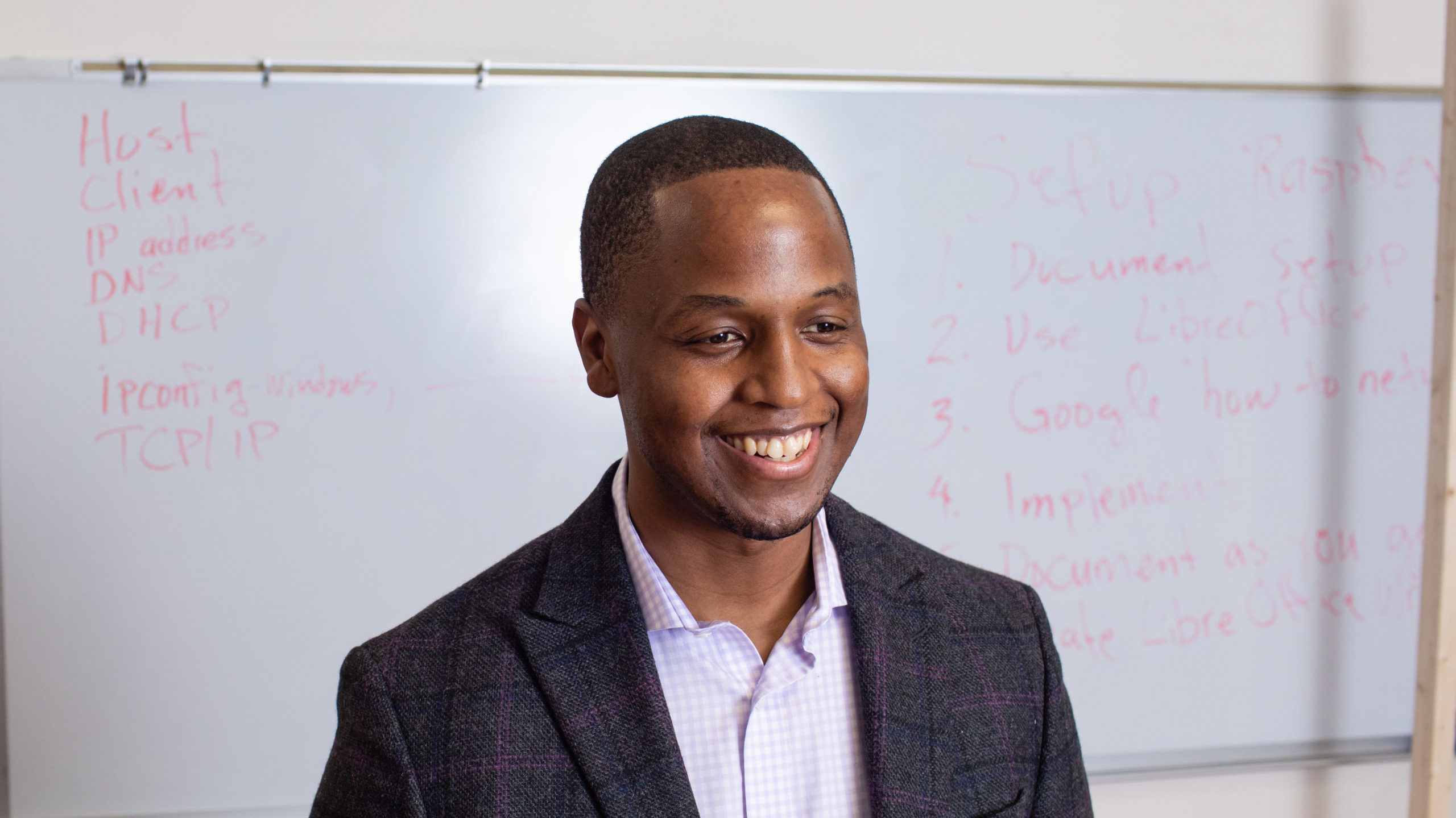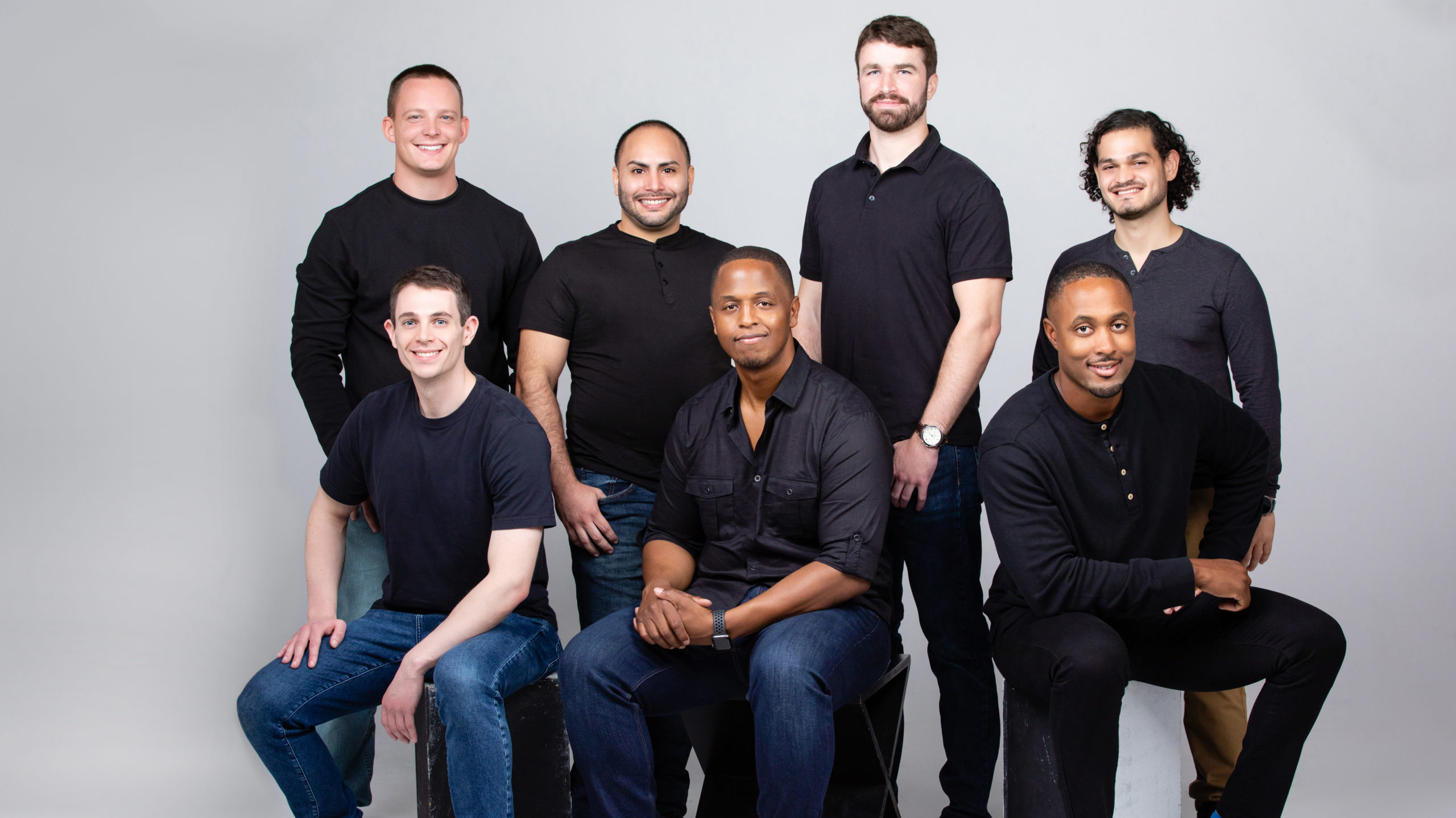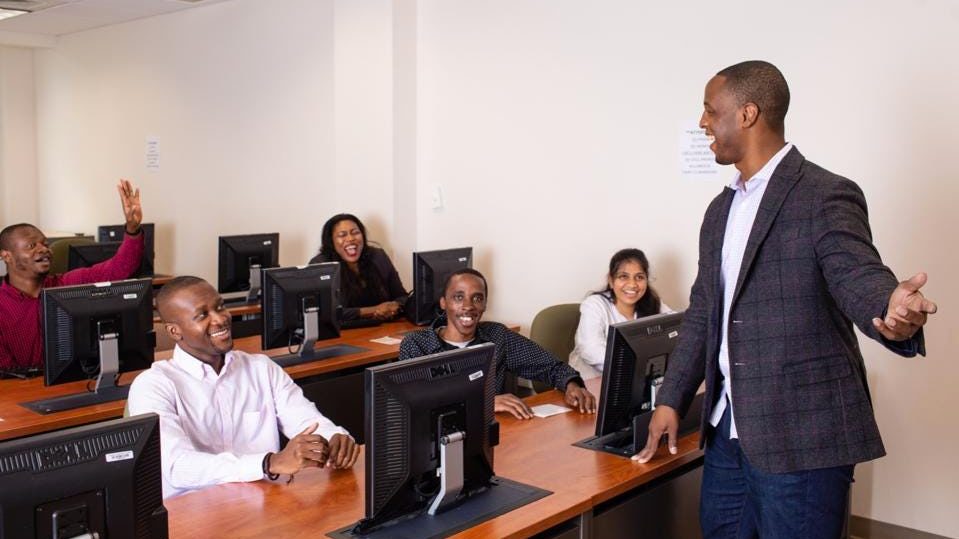Working AI: How a Passionate Engineer Went From Writing Code to Running a Company

Dr. Benjamin Harvey is living proof that there are almost no limits to AI’s versatility. He has used machine learning to investigate environmental problems, aid cancer research, and probe the damage caused by national security leaks. Last year, he took many of the lessons he’d learned and launched his own startup. He spoke with us about entrepreneurship, the importance of mentors, and how he stays energized by letting his passions guide his career choices.
Titles:Founder and CEO, AI Squared, Inc. Senior Research Associate at Johns Hopkins University; Research Professor at Bowie State University; Research Professor at George Washington University.
Location: Washington, D.C.
Education: BS, Mississippi Valley State College; MS and PhD, Bowie State University
Favorite ML areas: Model optimization, AI augmentation, Computer Vision, Natural Language Processing.
Favorite ML researcher: Matei Zharia, Chief Technologist at Databricks, creator of Apache Spark and MLFlow, and one of my mentors.
You are co-founder and CEO of a company called AI Squared. What does your company do?
We have created a framework that simplifies the process of integrating AI models into any existing or third-party application. From the user perspective, it looks like a browser extension. Let’s say you are a financial advisor, and the main app you use is a customer relationship management (CRM) tool. This shows you a screen full of potential clients, but you need to know which ones are most likely to become a paying client.
Let’s also say that machine learning engineers at your company developed a model that scores each potential client based on how likely they are to become a paying client. This is a great tool, but getting your list of clients from the CRM into the machine learning model is cumbersome. What AI Squared does is provide an interface that directly integrates the machine learning model into the CRM tool, so you see your list of potential clients automatically ranked by which ones are the most likely to result in sales. From the user perspective it’s very lightweight.
What inspired you to launch this company? ?
I previously worked for 10 years at the National Security Agency, where I oversaw a team of about 40 data scientists. But, about 90 percent of what they built never made it into a mission application. We had all these models sitting on shelves, but not because they didn’t work. Our users weren’t using these machine learning products because there was no seamless way to integrate their insights into the two to three apps that they used on a daily basis. Many organizations face the same thing, where the challenge with using machine learning isn’t with the models themselves, but with the last mile of adoption. Our platform directly addresses this gap.
Where is AI Squared at right now in its journey as a startup?
We recently raised $6 million in seed funding and are using that money to mature our platform. We want to make it case agnostic, so we can empower a customer to solve any internal use case of that last mile challenge of integrating AI into a given application. We currently have deals with two large clients. One with Johns Hopkins Applied Physics Lab and one with a financial services firm with 160,000 advisors and sales executives.
We are also building out our sales and marketing. We’re trying to prove market fit and showcase that AI Squared has the technology with huge commercialization potential, and to get there we are trying to reach milestones, like having a certain size user base and a certain amount of recurring revenue. From there, we can move to a Series A.
Do you have advice for others on how to approach investors?
Make sure you have good traction before you go into those investor meetings. Traction is when you can prove that your technology has commercialization potential. You also need to make sure you have a strong team, because in those early stages investors are investing in you, your vision, your team, and your team’s ability to make that vision a reality.
How is being a CEO different from being a front-line engineer?
The big pivot for me has been from building products, to building a company that builds products. I am an engineer at heart, but as a CEO, you are in trouble if you feel like you are the person in your organization who is most capable at doing the engineering. So, I have a team of engineers who can do things 10 times better than me. You have to have confidence in their skills so you can pull back and focus on growing the business, raising resources, building relationships, and doing whatever is necessary for the company to thrive. I trust my engineers, and that allows me to focus on becoming the next unicorn.
What was the hardest part about transitioning from an academic or government role into business?
In business, the most important thing is your customer, and you have to be completely wrapped around the pain and needs of your customer. And the only way to get that knowledge is through hundreds of customer discovery interviews and actually working on pilot versions with customers. But sometimes the hardest thing is keeping that target in focus, because you have all these super amazing engineers and what’s on their mind might be innovation, not necessarily the needs of the customer. So you always have to be ready to bring your engineers back around to focus on the user’s needs.

When did you first get hooked on AI?
Growing up, my dad was a manager at AT&T, and when I was about eight or nine years old he brought home a couple of broken computers. In my spare time I took the computers apart and got them working again to try so we could play floppy disk games. Later, when I was in sixth grade, my older brother started teaching me calculus, which he was learning in high school. When he went on to study computer engineering at the University of Miami he would also teach me about the fundamentals of computer science.
From then, I was hooked and I knew this was something I wanted to do in the future. I ended up going to a college preparatory high school that focused on STEM, and at that point I really started to dig into the math and science behind programming. By the time I went to college, I was 100 percent sure that I wanted to study computer engineering.
You have applied your AI skills to a wide variety of domains. Can you tell me about some of the work you’ve done with medicine?
My dad had high blood pressure, which led to kidney failure, which led to him being on dialysis and eventually passing in 2015. After his death, I looked for ways to help people like him, who aren’t able to afford the blood tests that would have caught his condition early. I applied for internships and fellowships in healthcare and the life sciences and was accepted to the Harvard/MIT program for Health Science Technology Innovation. One of the projects I did there was creating an interface for doctors to look through patient genetic and genomic data and identify single nucleotide polymorphisms associated with disease.
I carried that work into a post-baccalaureate program where we took the application a bit further, allowing doctors to export the data so they could use it in other applications and other analyses. Finally, I worked with the National Institutes of Health, helping physicians identify the genetic causes of patients with hypertension and diabetes.
You’ve also used AI for environmental research. Can you tell me about that?
One of my college internships was with the Environmental Protection Agency, where I did a study correlating air quality and visitation rates at the Great Smoky Mountains National Park. We did a comparative analysis between several different machine learning models looking at carbon monoxide, sulfur oxide, nitrogen oxides, and lead samples between 1990 to 2007. We found that an increase in those pollutants were directly correlated with a decrease in park visitation. It was an end-to-end analysis so we engineered the data, analyzed it, applied the machine learning models, and developed a visualization.
You’ve also applied AI to space research. How did you get involved in that?
That job actually came from my aspirations to work with Tony Frazier at Maxar, where he is the executive vice president. Tony was a mentor of mine at the National Security Agency and he’s a guy like me, who had a humble upbringing, got an engineering degree from an Ivy League school, then ended up at Harvard to get his MBA. He is, in my opinion, the top federal contracting executive in the country. At Maxar, I was the head of data science, where I worked on applying machine learning techniques to large scale satellite imagery.
As you previously mentioned, you spent 10 years working for the National Security Agency. Are you able to talk about any of the work you did there?
I started out doing a three-year rotational tour in the NSA’s data science development program. I worked all across the agency, from research to operations. In one of my last positions I worked as the lead data scientist for a team that analyzed the impacts to national security caused by the Edward Snowden leaks. The results of my analyses were reported directly to the director of the NSA.
However, one of my greatest achievements at the NSA was helping inner city kids in Baltimore experience a day in the life of a data scientist through a program called NSA’s Day of Cyber. I was showing kids who grew up poor and disadvantaged like me that even if they were dealt a bad hand they could still come out on top as long as they could put in energy, hard work, and effort.
In addition to running your own company, you are a researcher at three universities. What are some of your favorite projects?
My main faculty appointment is at Johns Hopkins University, where I’m a Senior Research Associate. That’s where I built the Covid-19 risk calculator, which has been used by over 4 million Americans. The tool calculates risk of mortality from COVID-19 in currently uninfected individuals based on input on a set of risk-factors, and community-level pandemic dynamics in the state of residence.
We also worked with large organizations like the U.S. Department of Veterans Affairs to prioritize equitable vaccine distributions based on risk. I also teach Johns Hopkins University’s first scalable computational bioinformatics course within the Biostatistics Department.

What are the differences between doing machine learning in government versus doing it in a private company?
After I left the NSA I worked at Databricks because I was interested in trying out a Silicon Valley-style startup. One of the biggest differences I found was that, at the National Security Agency we did a lot of work to assure our stakeholders that these models were not making biased decisions. We needed to know when the model or the data was drifting so we weren’t making decisions based on incorrect classifications. There were a lot of additional nuances to ensure the pipeline was secure and managed well.
On the industry side you are trying to get the most immediate value out of your machine learning and AI. It’s all about minimizing time to market because you want to increase growth, decrease risk, and increase revenue.
What would you say is the key to being a successful machine learning engineer?
The key to being successful in this field is to really understand what your interests are, because these are going to guide where you put your energy and effort. I have a friend who was a data scientist at the NSA but who was passionate about basketball. He followed that passion to a data science career with the Orlando Magic NBA team, where he led their analytics division. If you know your passion and align that with your career, you’ll stay focused and you’ll do whatever you need to do to gain the knowledge to be successful.
You are an incredibly busy guy. How do you manage your time?
One huge, important thing is I get 5-6 hours to myself early each morning, just to think. This has to happen before the day gets going, before I’m answering calls, doing meetings, reacting to emails. I have a schedule for how I spend those early morning hours. I start with writing, then I catch up on the latest research in a given domain. Then I develop coursework for my students. Then I work on the specific research projects I’m doing for the various universities I work for. After all that there’s a development chunk, where I’m just writing code. Then I spend some time mentoring the next generation of machine learning engineers. I’m up every day at 2am and in bed every night at 10pm. It’s a sacrifice, but I love what I do and it’s worth it.
Connect with Dr. Benjamin Harvey on LinkedIn!
Want to turn your passion into a career?